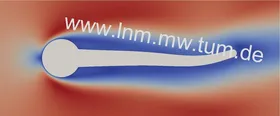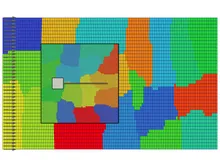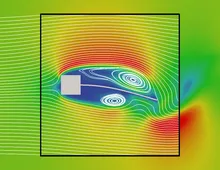Biotechnology: Biofilms
Interdisciplinary modeling of biofilms
Mirella Coroneo, Benedikt Schott, Sudhakar Yogaraj
The main objective of this IGSSE (International Graduate School of Science and Engineering) project is to shed a light on the missing understanding of the macro-scale dynamic lives of bacterial aggregates living in a complex environments. Indeed, a better understanding of biofilms requires reliable experimental findings and detailed models that are capable of predicting biofilm architecture and growth and their interaction with the surrounding fluid.
Biofilms are communities of microorganisms surrounded by an extracellular self-secreted polymer matrix. Their formation is desirable in some applications, while being completely penalizing in other cases. Nonetheless their mechanics, architecture and interaction with the fluid are still not well understood, essentially because of the difficulties encountered in carrying out appropriate measurements. As a result, a proper modelling of biofilm structures become crucial in the process of understanding their macro-scale dynamic and the way they interact with the environment. To date however only limited attempts have been done in order to model at the same time the substrate transport, the biofilm growth and its transient interaction with the surrounding fluid.




In the framework of this project, we develop novel approach for modelling the fluid-structure interaction (FSI) and the substrate transport and reaction of big growing biofilm aggregates, for which continuum models can be applied. For this purpose a novel multi-scale growth model for the simulation of the growth and erosion of biofilm structures was developed. It is based on a finite element approach, developed in our in-house research code, for the numerical simulation of a sequential one-way coupling of the FSI and the scalar transport models. Biofilm modelling will also involve the use of novel inverse analysis approach for the characterization of biofilm mechanical properties and the development of computational models for biofilm detachment.
This type of approach can give an important contribution to the understanding of biofilm architectures living in a complex environment. It allows to study the development of complex and real-life biofilm structure shapes often seen in nature and industry, to understand the influence of operating conditions, and therefore can enable the control of biofilm behaviour.
Publications
Please find publications on this topic here.


